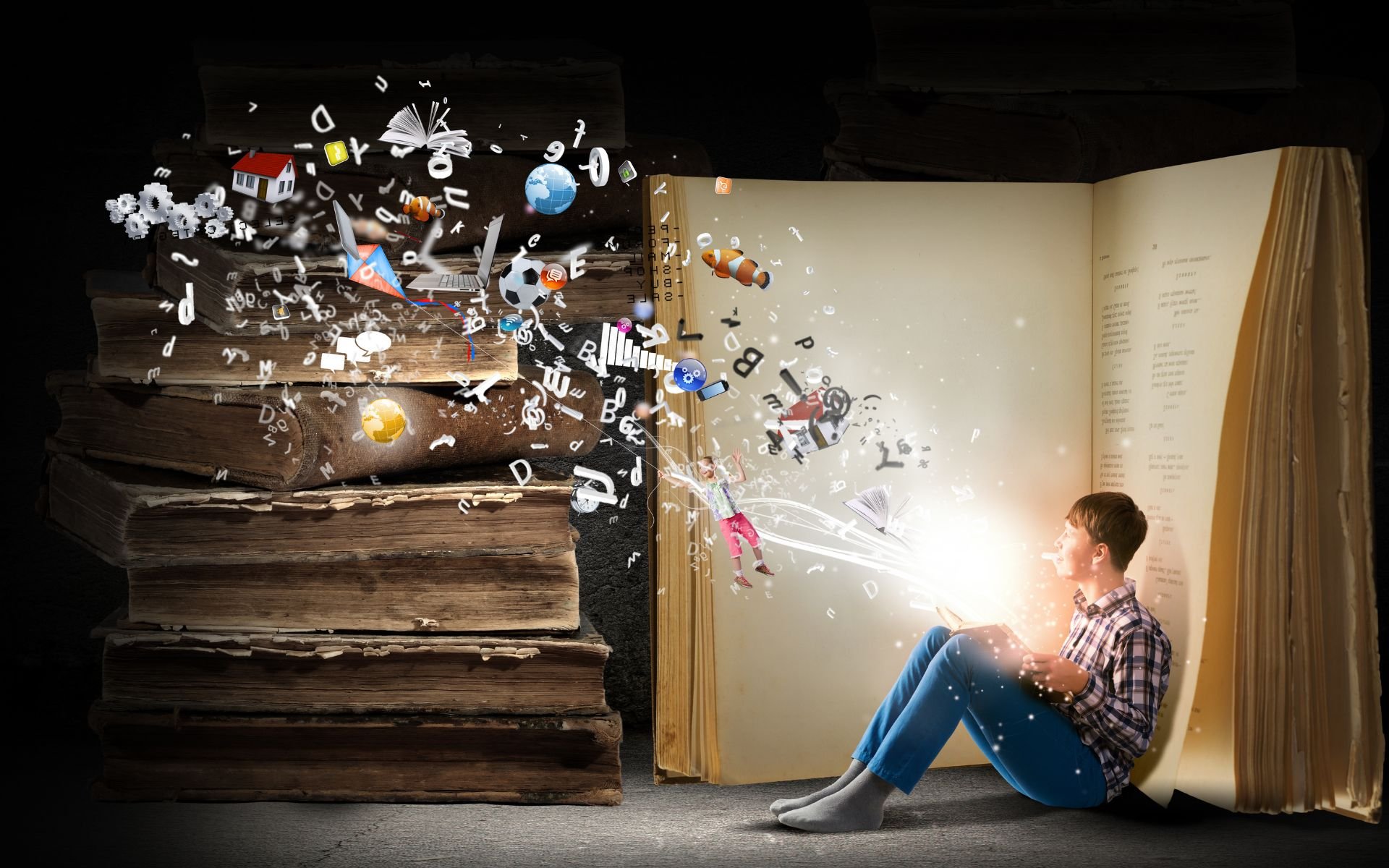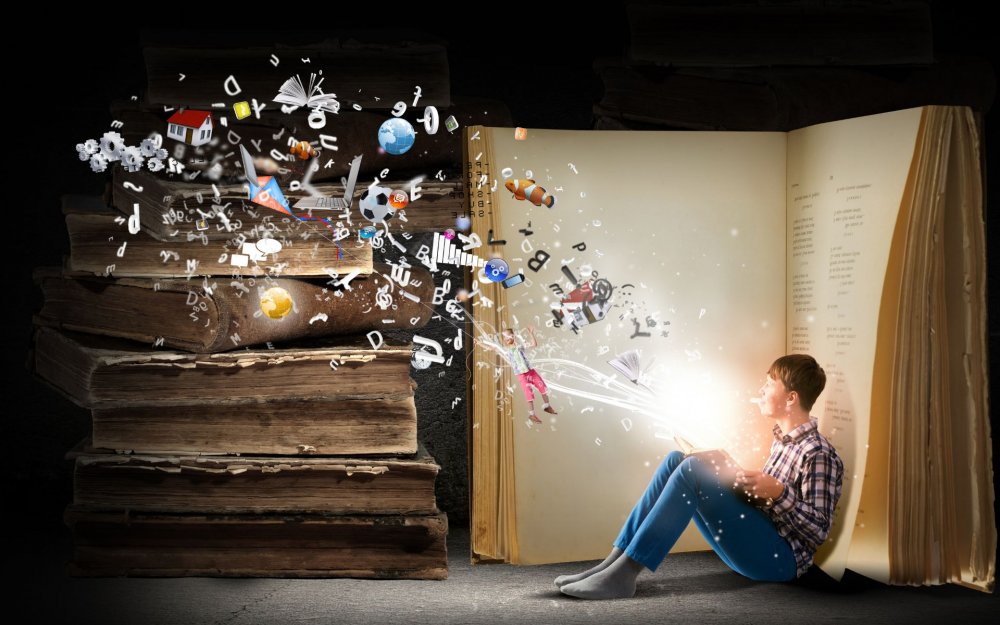- Our School
- Our Advantage
- Admission
- Elementary•Middle School
- High School
- Summer
- Giving
- Parent Resources
- For Educators
- Alumni
« Back
How AI Can Play a Role in Learning to Read
January 9th, 2024
"Instead, the magic of teaching lies in creating the conditions for students to wrestle with how what they believe to be true about the world intersects with, and helps them make sense of, the curriculum. This is where I think tools like ChatGPT can be most helpful: offering teachers enough background information about our students’ interests so that we can ask questions that resonate and make sense within their lived experiences."
I was recently asked the question: How might Artificial Intelligence (AI) play a role in how people learn to read?
Like me, for people with dyslexia who didn’t learn to read until later in life, learning to read began the day we crossed paths with someone we trusted enough to drop our defenses and show up as our full selves. I needed to know three things before I could trust you:
1) You knew how to teach.
2) You appreciated me as an autonomous human being.
3) You liked me.
Demonstrating this is something that is earned one conversation at a time, not just through a single lesson or a book choice. It is this lived experience that informs both my work as an educator AND how I understand the role AI can play in how people learn to read.
From this vantage point, it’s hard for me to imagine how AI could directly play a role in teaching someone like me to read. That said, I do think AI-powered tools, like ChatGPT, can play an important role in helping teachers create the conditions for kids like me to learn to read.

AI as a Thought Partner
A few months ago I started working with a student who was passionate about his Judo practice but was not allowed to participate in any extracurricular activities until he improved his grades. As a matter of principle, he refused to engage with any of the work one of his teachers assigned, dismissing it as “busy work” that would ultimately prove to be “irrelevant” later in life. While this was a commendable protest, anyone who has witnessed (or participated in) a power struggle like this knows that educational institutions typically don’t back down once they have drawn a line in the sand. So what could be done? This student was willing to sacrifice something that he loved, his Judo practice, to prove his point.
Using ChatGPT to Make Learning Personal
In preparation for our first conversation, I decided to learn a little something about Judo. I knew there was something about using your opponent's force to your advantage, but I didn’t want to wade into a discussion about a topic I knew very little about. My first stop was YouTube, remember—I have dyslexia—so I typically only engage with text as a last resort. After attempting to watch a number of videos, my ADHD, impatience, and taste for immediate gratification kicked in. And so…I asked ChatGPT for help: “Can you give me a quick explanation to Judo?” It gave me just what I was looking for and I scribbled down the following phrases: “maximum efficiency with minimum effort” and “practitioners must learn how to fall properly to avoid injury.” This is an example of how I, along with most educators today, would be using the internet to conduct some research before working with this student. I used ChatGPT, not as a bypass, but as an enhanced way to get what I need quickly and efficiently.
Our first meeting started with the question I ask all students who are assigned to work with me: “Why do you think folks thought it would be a good idea for us to work together?” After listening to his explanation, I said: “Your dad mentioned you practiced Judo. I don’t know much about Judo, but wondered if you thought any of those principles might be useful in helping us think about a path forward for your schoolwork.” While this part of the conversation lasted only a few minutes, it created the conditions for us to be curious together.
Now imagine you are this student’s high school English teacher and the class is reading J. D. Salinger’s Catcher in the Rye. What if one of the guiding questions for reading this text was: How might Holden Caulfield’s journey have been different had he mastered the art of Judo? This question similarly provides the class an opportunity to be curious together about how their “extracurricular” interests can inform how they read and interpret a classic American text.
When I started teaching, I thought differentiating my instruction required me to become an expert in each of my students’ individual interests. I realize now that the goal isn’t for me, as their teacher, to use their interests to guide them to make the “right” connections. Instead, the magic of teaching lies in creating the conditions for students to wrestle with how what they believe to be true about the world intersects with, and helps them make sense of, the curriculum. This is where I think tools like ChatGPT can be most helpful: offering teachers enough background information about our students’ interests so that we can ask questions that resonate and make sense within their lived experiences. For me, having access to ChatGPT makes me much more comfortable giving students the space they need to explore how their interests connect to what we’re discussing in class.
AI as Practical Support
AI-powered tools, like ChatGPT, can also directly support our efforts as teachers to instill a sense of agency in our students. Let’s say your class is learning about the water cycle and you find a New York Times article about America’s groundwater crisis that you know is above their independent reading level. Copying and pasting this article into a tool like ChatGPT allows you to quickly generate multiple versions at different reading levels. Your students then have the opportunity to choose the level they want to read, which both re-affirms their agency as learners and offers the class an opportunity to collectively explore what constitutes a higher reading level. This type of transparency allows students to see the bigger picture and better understand the advantages that come with becoming a more fluent reader.
Landmark has already proven itself as a leader in teaching kids like me to read through individualization for every student. AI won’t change that, but it does provide teachers with a time-saving, accessible, and useful tool to create the conditions necessary for students to become invested, confident, and competent readers.
About the Author
Dr. Dan Morrison (he/him) is a veteran educator and educational consultant who specializes in human-centered innovation and change management for K-12 independent schools. Dan taught Biology, Chemistry, and Early Literacy Tutorials at Landmark from 2004-2008. For more information about Dan’s work, visit www.askdan.co

Posted in the category Learning Disabilities.






















